Computex 2006: 300W GPUs, Conroe, HDMI Video Cards and Lots of Motherboards
by Anand Lal Shimpi on June 5, 2006 10:24 PM EST- Posted in
- Trade Shows
It’s almost like we say this every year, but Computex hasn’t even officially started yet and we already have a lot to talk about. Everything from the power requirements of next year’s GPUs from ATI and NVIDIA to the excitement surrounding Intel’s Conroe launch is going to be covered in today’s pre-show coverage so we’ll save the long winded introduction and get right to business.
We will first address some of the overall trends we’ve seen while speaking to many of the Taiwanese manufacturers and then dive into product specific items. We’ll start with the most shocking news we’ve run into thus far - the power consumption of the next-generation GPUs due out early next year.
DirectX 10 GPUs to Consume up to 300W
ATI and NVIDIA have been briefing power supply manufacturers in Taiwan recently about what to expect for next year’s R600 and G80 GPUs. Both GPUs will be introduced in late 2006 or early 2007, and while we don’t know the specifications of the new cores we do know that they will be extremely power hungry. The new GPUs will range in power consumption from 130W up to 300W per card. ATI and NVIDIA won't confirm or deny our findings and we are receiving conflicting information as to the exact specifications of these new GPUs, but the one thing is for sure is that the power requirements are steep.
Power supply makers are being briefed now in order to make sure that the power supplies they are shipping by the end of this year are up to par with the high end GPU requirements for late 2006/early 2007. You will see both higher wattage PSUs (1000 - 1200W) as well as secondary units specifically for graphics cards. One configuration we’ve seen is a standard PSU mounted in your case for your motherboard, CPU and drives, running alongside a secondary PSU installed in a 5.25” drive bay. The secondary PSU would then be used to power your graphics cards.
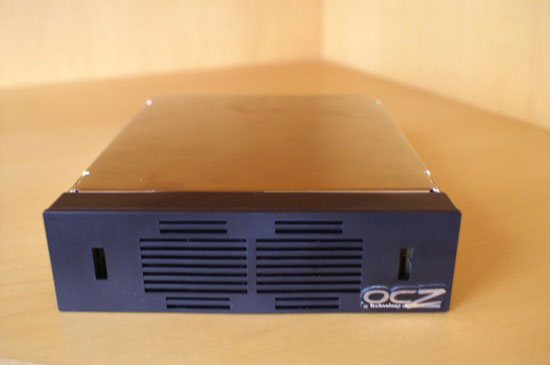
OCZ had one such GPU power supply at the show for us to look at. As you can see above, the 300W power supply can fit into a 5.25" drive bay and receives power from a cable passed through to it on the inside of your PC's case.

OCZ is even working on a model that could interface with its Powerstream power supplies, so you would simply plug this PSU into your OCZ PSU without having to run any extra cables through your case.
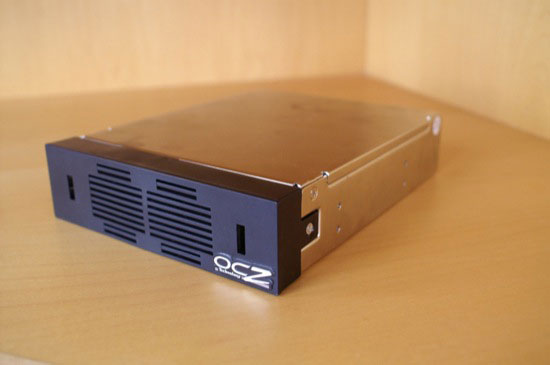
In order to deal with the increased power consumption of this next-generation of DirectX 10 GPUs apparently manufacturers are considering the possibility of using water cooling to keep noise and heat to a minimum.
As depressing as this news is, there is a small light at the end of the tunnel. Our sources tell us that after this next generation of GPUs we won’t see an increase in power consumption, rather a decrease for the following generation. It seems as if in their intense competition with one another, ATI and NVIDIA have let power consumption get out of hand and will begin reeling it back in starting in the second half of next year.
In the more immediate future, there are some GPUs from ATI that will be making their debut, including the R580+, RV570 and RV560. The R580+ is a faster version of the current R580, designed to outperform NVIDIA’s GeForce 7900 GTX. The RV570 is designed to be an upper mid-range competitor to the 7900GT, possibly carrying the X1700 moniker. The only information we’ve received about RV570 is that it may be an 80nm GPU with 12-pipes. The RV560 may end up being the new successor to the X1600 series, but we haven’t received any indication of specifications.
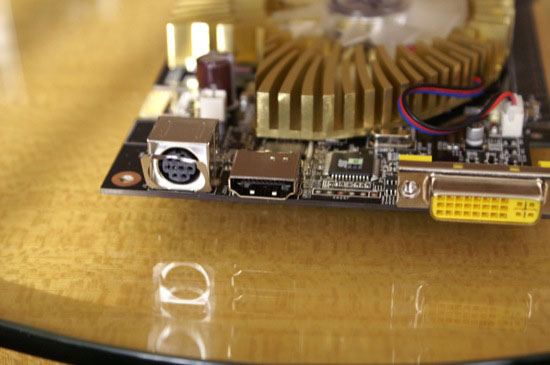
After the HDMI/HDCP fiasco that both ATI and NVIDIA faced earlier this year, we’re finally seeing video cards equipped with HDMI outputs and full HDCP support. The HDCP solution of choice appears to be a TMDS transmitter by Silicon Image that has found its way onto almost all of the HDMI equipped video cards we’ve seen.
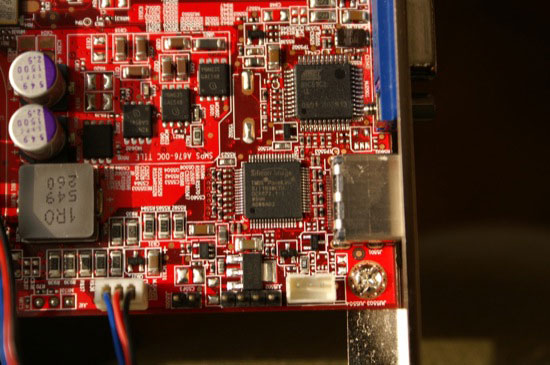
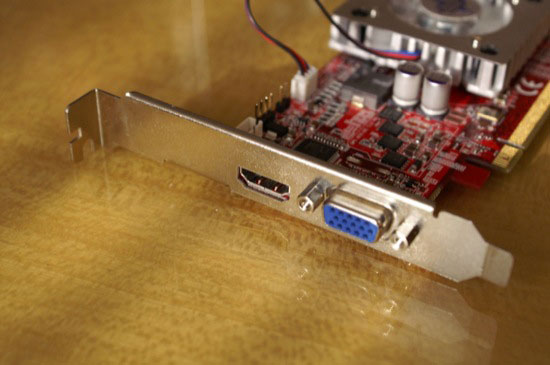
While some of the HDMI equipped graphics cards simply use the HDMI output as a glorified DVI connector, other companies have outfitted their designs with a SPDIF header to allow for digital audio passthrough over HDMI as well. Remember that the HDMI connector can carry both audio and video data, and by outfitting cards with a header for internal audio passthrough (from your soundcard/motherboard to the graphics card) you take advantage of that feature of the HDMI specification.
Alongside HDMI support, passively cooled GPUs are “in” these days as we’ve seen a number of fanless graphics cards since we’ve been here. The combination of HDMI output and a passive design is a definite winner for the HTPC community, who are most likely to be after a video card equipped with a HDMI output at this point.











61 Comments
View All Comments
phusg - Tuesday, June 6, 2006 - link
No, transparent side windows already did that ;-)
OCedHrt - Tuesday, June 6, 2006 - link
So what happened to ASRock boards (supposedly page 18)?bongobear - Tuesday, June 6, 2006 - link
I'd like to see what ASRock have lined up as well, however the mini-ITX Albatron boards that were shown in their place were a nice surprise. If they can tweak those a little and get them out at a nice price, very tempting....JarredWalton - Tuesday, June 6, 2006 - link
Anand has a ton of pictures and information from his trip, so he'll probably provide a second update later. However, I've updated the page links to correctly reflect the Albatron content on page 17.Stele - Tuesday, June 6, 2006 - link
There are actually two major types, one (the more common) being filled with solid compound as noted, and are simply called solid electrolytic, or solid aluminium electrolytic capacitors. The other type uses non-solid electrolyte. Both types are better than the usual electrolytic capacitors of course in terms of resistance to high temperatures - generally around 1,500-3,000 hours at 105°C-125°C. Another useful characteristic is that they perform well in high-frequency, high-capacitance applications, which is one reason they've often been used on graphics cards, for example.
They are however not immune from leaking and other capacitor related failures... it's just that they can survive prolonged exposure to higher temperatures for longer periods of time than the regular electrolytic capacitors before they too fail.
This, unfortunately, is non sequitur i.e. it does not follow. Component choice is but one of so many factors in determining the stability, performance and reliability of a product. A cheapo backyard manufacturer could boast 16-phase power, all-Nichicon/Rubycon solid electrolytic caps, Philips MOSFETs and AMP connectors all around but would still fail if the circuits were designed by a half-baked engineer fresh out of college and poorly manufactured. Of course, it could be used by the said cheapo manufacturer as a gimmick to fleece the gullible consumers (of which unfortunately there are very many) who rocket to seventh heaven on seeing such big names. Or a not-so-cheapo manufacturer could make their product more attractive by using such flash while cutting corners on areas where consumers probably won't notice in perhaps the first 6 months of use.
Speaking of gimmick, as mentioned above these capacitors are more useful in high-frequency, high-temperature applications. Naturally not every single circuit nor square inch of a motherboard would call for them and hence the extra cost of 100% solid electrolytic capacitors is unnecessary - they cost in the order of 3-5 times that of regular electrolytic caps, and when added up the savings could certainly be better used elsewhere on the board. For now, at least, other than the circuitries that really could benefit from the solid electrolytic capacitors, I would agree with the other manufacturers that indiscriminate plastering of the board with them is rather more marketing gimmick than engineering.
Viditor - Tuesday, June 6, 2006 - link
Anand/Jarred...I have a few questions if you get time.1. How is the RAS functionality for Woodcrest with the Asus server board?
2. Do the FBDIMMs require active cooling, and if so how much?
3. When Asus released the A8N32-SLI, they hinted at releasing more boards with the 8 phase power...have/will they?
4. Any chance on finding out what the functionality is for the 1207 pins on Socket F?
Cheers! And thanks for the article...!
bob4432 - Tuesday, June 6, 2006 - link
after all this time and the floppy still lives on ...... ;)Calin - Tuesday, June 6, 2006 - link
Floppy is still the only way to load certain drivers for hard drive controllers in Windows (during installation). And as long as this will be the case, the floppy will live onDigitalFreak - Tuesday, June 6, 2006 - link
Fortunately, this problem goes away with Vista. I'm hoping that in a couple of motherboard revs, those damn things will go away.JarredWalton - Tuesday, June 6, 2006 - link
I linked in higher res images for some of the more interesting photos Anand took. If you would like to see any others in more detail, let me know (via email) and I will see about adding those. Note that some images are left in "lo-def" because it reduces blurriness. :)Take care,
Jarred Walton
Editor
AnandTech.com